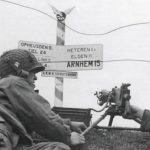Why didn’t the British radios work?
Immediately after the landings at Wolfheze, the British troops were confronted with a problem that they had to deal with for days: poor communication via the radios. Two things are often mentioned as the main reason for the poorly functioning radios: the radios were equipped with the wrong crystals and the wooded area of Arnhem…


















